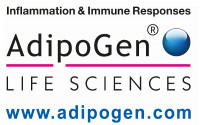Cookie preferences
This website uses cookies, which are necessary for the technical operation of the website and are always set. Other cookies, which increase the comfort when using this website, are used for direct advertising or to facilitate interaction with other websites and social networks, are only set with your consent.
Configuration
Technically required
These cookies are necessary for the basic functions of the shop.
"Allow all cookies" cookie
"Decline all cookies" cookie
CSRF token
Cookie preferences
Currency change
Customer-specific caching
FACT-Finder tracking
Individual prices
Selected shop
Session
Comfort functions
These cookies are used to make the shopping experience even more appealing, for example for the recognition of the visitor.
Note
Show the facebook fanpage in the right blod sidebar
Statistics & Tracking
Affiliate program
Conversion and usertracking via Google Tag Manager
Track device being used
![Succinic acid [Succinate]](https://www.biomol.com/media/image/70/bc/bc/AG-CN2-0521-G001_600x600.png)
| Item number | Size | Datasheet | Manual | SDS | Delivery time | Quantity | Price |
|---|---|---|---|---|---|---|---|
| AG-CN2-0521-G001 | 1 g | - |
3 - 9 business days* |
22.00€
|
|||
| AG-CN2-0521-G005 | 5 g | - |
3 - 9 business days* |
66.00€
|
If you have any questions, please use our Contact Form.
You can also order by e-mail: info@biomol.com
Larger quantity required? Request bulk
You can also order by e-mail: info@biomol.com
Larger quantity required? Request bulk
White powder. Soluble in water (50mg/ml), ethanol (20mg/ml) or methanol (50mg/ml). Chemical. CAS:... more
Product information "Succinic acid [Succinate]"
White powder. Soluble in water (50mg/ml), ethanol (20mg/ml) or methanol (50mg/ml). Chemical. CAS: 110-15-6. Formula: C4H6O4. MW: 118.1. Metabokine that accumulates specifically in brown adipose tissue (BAT) and induces thermogenesis by activating brown fat (BAT). Inflammasome activator through a ROS-dependent pathway. Important in antimicrobial defense. Oncometabolite promoting angiogenesis. Agent to study cancer immunity, involved in both inflammatory diseases and cancer. Important in microbe-microbe interactions in gut microbiota. Useful for immunometabolism research. Intermediate of the tricarboxylic acid (TCA) cycle playing a crucial role in adenosine triphosphate (ATP) generation in mitochondria. All metabolic pathways that are interlinked with the TCA cycle, including the metabolism of carbohydrates, amino acids, fatty acids, cholesterol and heme, rely on the temporary formation of succinate. Binds to the receptor SUCNR1 (GPR91) triggering intracellular calcium release and inhibits cAMP production, inducing cellular stress. Involved in the formation and elimination of reactive oxygen species, epigenetics, tumorigenesis and inflammation (inflammatory cytokine production). Involved in protein succinylation, a novel posttranslational modification pathway. Mutations in enzymes such as succinate dehydrogenase (SDH) that participate in succinate-related pathways lead to various pathologies, including tumor formation and innate inflammatory processes. High concentration of succinate in tumor microenvironments acts as an active participant in tumorigenesis. Extracellular succinate can act as a signaling molecule with hormone-like function, targeting a variety of tissues such as blood cells, adipose tissue, immune cells, the liver, the heart, the retina and kidney. Re-entry point for the gamma-aminobutyric acid (GABA) shunt into the TCA cycle, a closed cycle which synthesizes and recycles GABA. Used in a wide range of applications in agricultural, food (neutralizing agent), pharmaceutical industries and as building block for dyes or flavouring agents. In addition it can also be used in the synthesis of biodegradable polymers and as a matrix in infrared (IR) MALDI analytical methods.
| Keywords: | Butanedioic acid, 1,4-Butandioic acid, Ethylene dicarboxylic acid, NSC 106449 |
| Supplier: | AdipoGen Life Sciences |
| Supplier-Nr: | AG-CN2-0521 |
Properties
| Application: | Building block |
| MW: | 118,1 D |
| Formula: | C4H6O4 |
| Purity: | >99% |
| Format: | Solid |
Database Information
| CAS : | 110-15-6| Matching products |
Handling & Safety
| Storage: | +4°C |
| Shipping: | +20°C (International: +20°C) |
| Signal Word: | Warning |
| GHS Hazard Pictograms: |
|
| H Phrases: | H315, H319, H335 |
| P Phrases: | P302+P352, P304+P340, P305+P351+P338 |
Caution
Our products are for laboratory research use only: Not for administration to humans!
Our products are for laboratory research use only: Not for administration to humans!
Information about the product reference will follow.
more
You will get a certificate here
Viewed

